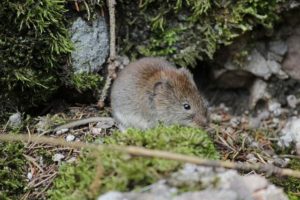Vole Lawn Damage Solutions: Effective Control Approaches
Vole Lawn Damage Solutions: Effective Control Approaches
Blog Article
Comprehensive Overview to Effective Vole Pest Control: Invasion Recognition and Treatment Techniques
In the realm of reliable pest control, vole invasions pose an one-of-a-kind challenge that demands a tactical technique. By checking out the nuances of vole habits, comprehending vital indicators of problem, and assessing a range of control alternatives, one can establish a comprehensive approach to battle these elusive bugs.
Recognizing Vole Habits
Vole habits is characterized by their tunneling behaviors and quick recreation prices, making them a difficult parasite to control efficiently. Their fast reproductive price further makes complex control efforts, with females capable of producing numerous clutters in a solitary year, each including numerous offspring.
Recognizing vole actions is crucial for reliable bug control methods. By identifying their burrow places, monitoring feeding locations, and executing targeted control techniques, such as trapping or habitat alteration, vole invasions can be handled effectively.
Indications of Vole Invasion

Avoidance Approaches
Carrying out reliable prevention techniques is essential in reducing vole infestations and safeguarding plant life from their harmful feeding routines (vole pest control). To avoid vole invasions, it is important to begin by getting rid of potential food resources and sanctuary. Keep lawn and plants cut short, remove weeds and debris, and maintain a tidy garden or yard to make the area much less eye-catching to voles. Installing barriers such as hardware fabric or underground fence can likewise help hinder voles from getting in details locations. Furthermore, reducing excess dampness by dealing with leaky pipelines and making certain proper drainage can make the atmosphere much less friendly for voles.
Regularly inspecting the residential property for indicators of vole activity, such as runways and delve openings, is crucial see this page for very early detection and prompt action. If vole task is thought, think about making use of repellents or catches purposefully positioned near their pathways. Employing natural predators like owls or serpents can likewise aid keep vole populations in check. By implementing a mix of these avoidance strategies, homeowners and gardeners can efficiently protect their plants from vole damages.
Non-Lethal Control Techniques
To efficiently manage vole populaces while focusing on gentle techniques, non-lethal control techniques supply useful solutions for decreasing vole damage in landscapes and yards. These obstacles can be hidden at the very least 12 inches deep and curved at a 90-degree angle to protect against voles from burrowing underneath.

Lethal Control Options
One effective approach for addressing vole problems in gardens and landscapes entails the calculated use dangerous control alternatives. When faced click for info with a serious vole invasion that non-lethal techniques have actually fallen short to contain, implementing lethal control actions becomes crucial. One frequently employed lethal control alternative is making use of snap traps. These traps are created to quickly and humanely kill voles upon activation, making them a preferred selection for lots of gardeners and landscaping companies. To raise the effectiveness of snap catches, it is advised to put them in locations where vole task is high, such as along paths or near burrow entryways. One more dangerous control choice is the use of poisonous baits especially developed to target voles. These lures have poison that is ingested by the voles, leading to their ultimate death. Care should be worked out when using harmful lures to protect against damage to non-target pets or pets. Overall, when employing deadly control choices, it is necessary to do so sensibly and based on neighborhood laws to successfully manage vole invasions.
Final Thought
Finally, reliable vole insect control needs a detailed understanding of vole habits, recognition of indications of invasion, implementation of avoidance techniques, and usage of both non-lethal and lethal control techniques. By description combining these techniques, individuals can properly handle vole populaces and secure their building from damages. It is essential to resolve vole infestations immediately to avoid further issues and decrease the influence on the surrounding setting.
Provided the detailed tunnel systems and rapid reproduction rates particular of voles, recognizing the indicators of vole invasion becomes important in reliable bug control. One of the main indications of vole presence is the visibility of surface paths or routes in grass or snow, usually concerning 1-2 inches vast, developed as voles travel in between their burrows and food resources.To properly take care of vole populations while prioritizing gentle methods, non-lethal control techniques offer sensible solutions for decreasing vole damage in gardens and landscapes.One effective approach for attending to vole infestations in landscapes and yards includes the strategic use of dangerous control options. vole pest control.In verdict, effective vole insect control calls for an extensive understanding of vole habits, identification of indicators of invasion, execution of prevention strategies, and utilization of both dangerous and non-lethal control approaches
Report this page